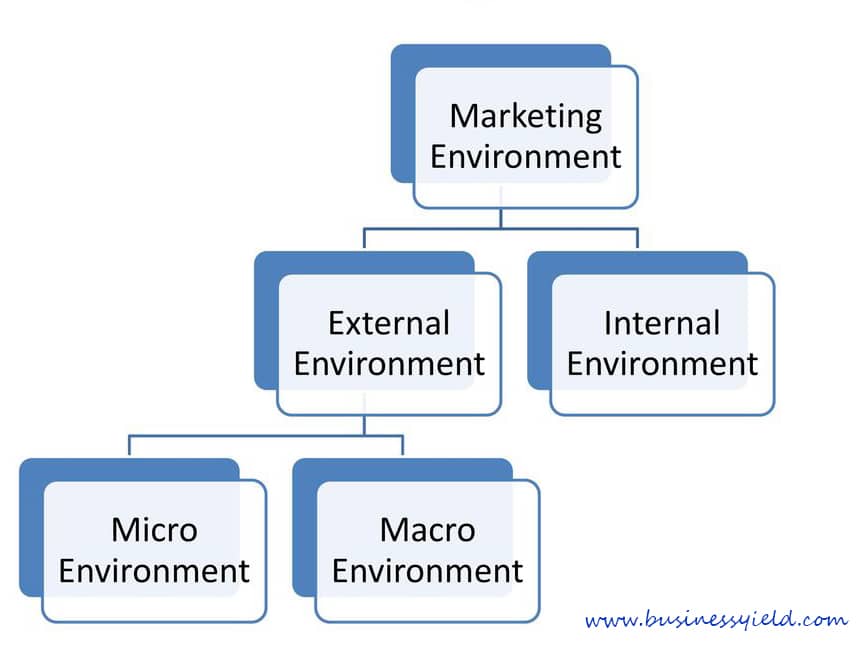For a company to fulfill its quarterly sales goals, social selling can be a crucial marketing strategy. Social selling engages on digital social platforms and builds relationships with potential clients with the help of a sales and marketing team. Based on those ties, they can typically close sales more quickly than other approaches. In this post, we will define social selling, explore its benefits, and discuss best practices for implementing it in your company.
Social selling makes use of salespeople’s or team members’ professional social media presence to secure leads while also creating relationships with future customers. When implemented effectively, this marketing method can assist smaller businesses or direct salespeople reach their sales goals through intelligent interactions and targeted material shared with potential buyers.
Social selling entails leveraging various social media platforms to build relationships with your target audience, get visibility within the target market, provide material that demonstrates your value, and establish your brand’s trust, all of which contribute to increased sales. Both business-to-business and business-to-consumer marketing can benefit from social selling.
What Social Selling is Not?
Social selling does not entail sending unsolicited Tweets and DMs to random individuals. That is spam. Avoid doing it.
Adding new contacts to your list is only one aspect of social selling. It’s about making those conversations relevant and portraying your company as a problem-solver. When you do this, you increase your chances of gaining trust and loyalty.
What is Social Selling Index?
The Social Selling Index (SSI) is a metric that is used to assess the effectiveness of a brand’s social selling initiatives.
The SSI concept was first offered by LinkedIn in 2014. The LinkedIn SSI calculates a score by combining four factors. It examines whether you are:
- Creating a professional identity with a well-managed LinkedIn page.
- Discovering the proper folks on the platform.
- Providing relevant, conversation-starting stuff.
- Relationship development and maintenance.
Sign in to your LinkedIn account and go to the Social Selling Index dashboard to obtain your SSI score. Use your score as a starting point for increasing your social selling performance.
Why is Social Selling So Successful?
I’ve already published a few facts about the success of social selling. Another example: 78% of social merchants outsell their non-social peers.
Clearly, when done correctly, it may be an effective approach. These are three reasons why it works so well.
#1. Strengthening Relationships
If you’re willing to do your homework, you’ll discover that prospects are eager to share a plethora of information with their network, such as their wants, needs, ambitions, and issues.
As a salesperson, this allows you to form a preliminary picture of your prospect before reaching out to them. Even your initial interaction with them can be tailored to some extent, which means you’re more likely to come across as helpful and knowledgeable rather than pushy and obnoxious.
The more time you devote to social selling, the more powerful it becomes. Why? Because it is easier to reach out to new prospects through shared connections when you have a robust network consisting of individuals who recognize the value you bring.
Furthermore, those mutual connections are more likely to recommend you, which creates trust and improves ties with new prospects.
#2. Making Contact with Buyers on “Home Turf”
Buyers are also taking advantage of the benefits of social media, in addition to salespeople.
That’s right: your prospects are actively hunting for solutions on social media. They are communicating with their network and conducting searches for:
- Find solutions to their business problems.
- Read about the suppliers who provide these solutions.
- Determine which vendor is the best fit for their requirements.
Therefore, if you’re not on social media, or if you’re not using social as part of your sales strategy, you could be missing out on all that low-hanging fruit.
#3. Taking Your Place at the Table
As you’re probably aware, social selling isn’t the “next big thing” in sales; it’s been there for a while.
In fact, nine out of ten top-performing salespeople say social networks play a crucial role in completing deals and are an essential aspect of their sales strategy.
You simply cannot afford to ignore social selling if the great majority of top sales achievers are doing so.
Benefits of Social Selling
The purpose of social selling is to build relationships with customers, but there are more advantages to social selling than just increased sales. The following are six advantages of social selling:
#1. Improves brand awareness
Your brand is seen by more potential customers thanks to social selling. When employees improve their social media profiles with a snappy headline, and a persuasive overview of the product they sell and its value to other consumers, others may take note of your brand and what your business offers.
#2. Produces high-quality leads
With so much information available on customer social media and networking accounts, finding quality leads who are likely to become future buyers of your product is simple. Use the information on a potential customer’s page to assess their goals and needs. If what your sales team has to offer appears to suit them, they have the potential to become a lead. From there, see if you have any mutual connections and if so, ask your connection to introduce you so you can start a genuine and natural conversation.
#3. Increases web traffic
When your brand’s visibility grows, your web traffic may improve as more people search for your company’s website. More visitors to your website means more opportunities to generate potential leads. Potential clients can then contact you via social media or email with any additional inquiries, providing you the opportunity to clarify details and clinch the transaction.
#4. Employees benefit
Social selling benefits the company as well as the employees who participate. Workers can enhance their personal brand by making a wide range of new contacts. Because of their contributions to the success of their firm, their success with this marketing strategy presents possible career options within their existing company.
#5. Reduces sales cycles
Utilizing technology to communicate on social media and professional networking sites makes it simple to develop relationships with possible buyers. Once you’ve established credibility with your profile and a brief introduction, you may be more likely to consummate the transaction in a shorter length of time because you and the potential buyer can communicate swiftly and efficiently online.
#6. Develops stronger relationships with clients
Building ties with your clientele is possible through social selling. Utilizing social media, you may learn a lot about your prospective client before even chatting with them by studying information on their profiles. When you contact them, you may already know what they want and how your company can help them, so you can structure your talks with them accordingly.
Similarly, by connecting with clients’ social media content and liking and sharing their posts, you can demonstrate your interest in them as well as your appreciation for their potential or ongoing business, which may lead to a more authentic connection and a higher possibility of closing a transaction.
The Best Social Selling Platforms for Your Business
Selecting a social selling platform mostly depends on an honest self-evaluation of your brand.
#1. LinkedIn:
This platform is ideal for business-to-business connections. LinkedIn is a B2B network where users enhance their personal brands to promote themselves as employees or business partners. It includes a proprietary tool called the LinkedIn Sales Navigator, which assists you in targeting business clients in the same way that Google and Facebook may assist you in targeting retail customers.
#2. Instagram
Instagram has a very loyal user base. Instagram has around 200 million active users that utilize the service on a daily basis. According to the firm, 70% of modern shoppers would consider researching or purchasing a product via Instagram. Instagram’s user population is younger than that of many other platforms, which means that organizations that target younger audiences can benefit from an active Instagram presence. For example, in 2020, the US Census Bureau promoted the census actively on Instagram in order to entice younger people to participate.
#3. TikTok:
TikTok provides instant virility and a younger audience. Social sellers have a chance to fast go popular thanks to TikTok’s proprietary algorithm. TikTok isn’t just for videos and memes; items also go popular and can sell out in a matter of days. While TikTok’s e-commerce strategy isn’t as evolved as that of other social media platforms, such as Instagram, it’s rapidly getting more refined, thanks in part to a significant collaboration with Shopify. Businesses may reach a younger audience by using TikTok to track and participate in viral trends and then use that information to create viral content of their own.
#4. Facebook:
Facebook encourages both conversation and commerce. According to a June 2020 eMarketer poll conducted by Bizrate Insights, 18.3 percent of Facebook users had completed a transaction on the platform. The firm is attempting to capitalize on this trend by introducing Facebook Shops, its own in-house e-commerce platform. This can make the Facebook platform a one-stop shop for learning about and purchasing a product. Facebook is also noted for its extensive comment threads, particularly those by-product fans expressing their experiences on a brand’s official Facebook page. Long, deep conversations naturally generate social engagement and are a major component of social selling.
#5. Twitter
Twitter is vital for customer service. Twitter is a powerful discussion platform, particularly for customer service. Many social sellers use Twitter marketing to track mentions and take extra precautions to respond to unfavorable criticism. While Twitter has not invested as heavily in e-commerce as Meta Platforms (owner of Facebook and Instagram), marketers rely on it for product discussions and feedback.
#6. YouTube:
YouTube keeps your audience informed and connected. Many large firms have a YouTube channel where they exhibit their products and provide relevant content that may interest their customer base. The key to social selling on YouTube is to avoid making long-form television commercials. Engage your audience authentically, provide general-purpose information, and revenues will occur organically over time.
Social Selling Tools
Use social selling tools to boost your chances of attracting new clients on social media. Here are three to get you started:
#1. Hootsuite Inbox
Hootsuite Inbox can keep all of your brand’s social selling strategies organized, whether they involve private communications, public messages (like comments), or both.
Consider this social selling tool to be a straightforward approach to centralizing all of your brand’s social media conversations. You can monitor, manage, and respond to any private and public messages your brand receives across several social platforms using the Hootsuite Inbox.
Keeping your social media communications organized is a good method to ensure that no messages go lost and that everyone who contacts you receives a response.
Other beneficial qualities include:
- You may use filters to swiftly and simply discover the communication thread you’re looking for, even if you’re dealing with a large volume of messages and comments.
- Teamwork and collaboration solutions allow you to assign messages to team members as assignments so that each inquiry is answered by the best person in your company.
- Stored responses that you can use to swiftly respond to popular questions.
#2. Boost
This program interacts with Hootsuite and is a powerful tool for expanding your brand’s social reach. In a word, Amplify increases your brand’s online presence by making it simple for team members to communicate corporate updates, initiatives, or announcements.
An employee advocacy app like Amplify can help employees feel engaged and compelled to share company content — a great, organic way for your brand to reach new potential customers. Because utilizing your workers’ personal networks broadens the reach of your material.
#3. Salesforce
This app also integrates with Hootsuite and is a simple way to find, edit, and track new business leads.
Salesforce allows you to pull new customer or prospect records directly from Hootsuite streams into the app. Furthermore, Salesforce automates the process of reaching out to and qualifying potential leads. You can also add more information to existing Salesforce records to help guide future discussions about social selling.
Conclusion
These suggestions can help you effectively advertise your company on social media, resulting in devoted customers and greater conversions. You merely need to create a thorough social selling strategy to make the most of these ideas.
Related Articles
- SOCIAL MEDIA MONITORING: Best Practices & Tools In 2023
- INSTAGRAM MANAGEMENT TOOLS: Uses, Free Tools & Pricing
- 2023 LINKEDIN MARKETING: Solutions, Ideas, Strategies & All You Need
- LINKEDLN ADVERTISING: What It Is, Cost, Policies & How to Do It
- LINKEDIN LOGO: Meaning, History, Font, & Design Influences






